#because being a screenwriter/ just working in film production is unrealistic
Explore tagged Tumblr posts
Text
every time i have a pe lesson i lose a tiny bit of my will to live
heads up i kinda started venting in the tags so if you dont want to put up with that just scroll <333
#ev yaps#vent incoming#sorry#none of the school subject slander is true btw other subjects r still very slay!!!#i fucking suck at pe#idk why but i physically cannot be good at sport#the one exeption being figure skating at which i am still kinda shit idk id never be anything close to professional#anyway to my peers its pretty much the only subject that matters#good at science? psycho (like nobody likes science but even so were all supposed to be decent at it)#maths? ok thats like the bare minimum also like nobody cares#english? ok cool#music? unless its singing or a rare-ish instrument nobody will actually give a shit#ok you get the picture#except art ig#but im not the best at it so it doesnt matter#OH NOT TO MENTION THE FUCKING 'IF YOU CANT KICK A BALL YOU'RE FAT' JOKES ISTGGGG EUGHH LIKE STOP THAT AINT COOL#im atheist but like damn god really didn't want me to amount to anything#like no joke i have literally no talent except for yapping#im just the loud kid with the weird sense of humour#that will end up working a shit boring ass job fr the rest of his life#or maybe i'll just work in an h&m until i fucking die#because being a screenwriter/ just working in film production is unrealistic#and i cant really write but its one of my best skills#i dont really know what else i can do with my life#and everyone is probably judging me#everything i say and do.#idk maybe im overthinking all of this and im fine. maybe all my problems and their impacts are being made up by some twisted corner of#my brain for attention#anyway sorry about that#back to our usual program
1 note
·
View note
Text
can i just say as a literal film production major that has taken multiple courses including screenwriting and tv/film development, OF COURSE the writers are going to build off of this weird tension between gina and ricky. but just because they’re showing after affects doesn’t mean they are a cannon ship or being set up to be. it simply is for the fact that they need to keep these characters as grounded, organic and real as humanity possibly when writing their dialogue and developing plot point. if they simply brushed rina under the rug and made both these characters not have any awkward tension, it would a) be artificial to plot they’re trying to build and b) would mean they’re horrible writers. if they pretended like nothing happened in season 2, the writers work they put into the rina plot device in season 1 would be completely undone and irrelevant to plot. if ricky didn’t feel weird around gina and nini, it would mean he never cared for her like they were trying to show in season 1 and if gina wasn’t hurt and heart broken seeing a boy she put herself out there for, then she would be an underdeveloped and unrealistic character that also would show she never cared. it would make their plot device and build line bad, and good writers recognize that and know how to show these characters grow from each other and the trials and tribulations of teen love. it only serves, at this point in time in the season 2 plot, as lose threads the want to tie up before sending ricky on a different path and let gina openly explore a relationship they are developing with EJ. just because gina has sad reactions to ricky and ricky is awkward around gina doesn’t mean they’re setting up rina but just that the writers are keeping their characters authentic and real with how teens would actually react in this situation
#portwell#anti rina#anti r*na#gina#gina porter#sofia wylie#ej#ej caswell#matt cornett#gina and ej#ej and gina#ej x gina#gina x ej#hsm#hsm the musical#hsm:tm:ts#hsmtmts#hsmtmts 2#hsmtmts2#hsmtmts ej#hsmtmts gina#high school musical: the musical: the series#high school musical the musical the series#thanks for coming to my ted talk#this is just my opinion and what i recognized on what i’ve been taught about industry standard screenwriting
47 notes
·
View notes
Text
Chinatown (1974); AFI #21
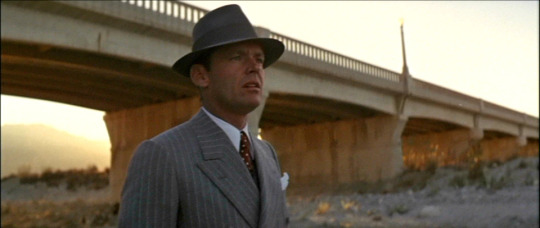
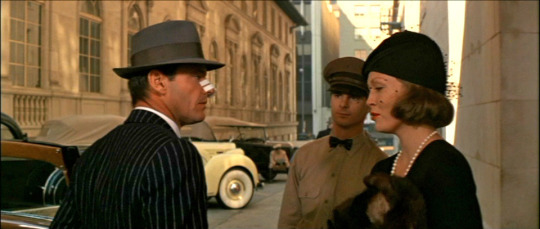
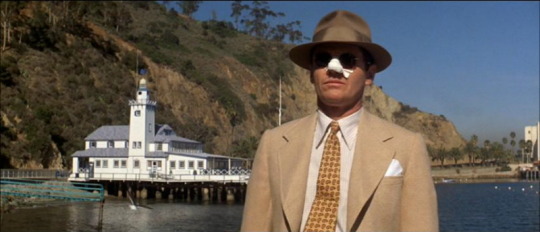
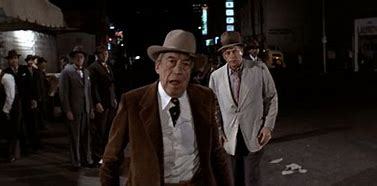
The next movie that we reviewed was a very dark example of neo-noir film directed by Roman Polanski, Chinatown (1974). This film was a throwback to very dark crime thrillers that reflected the outlook of a Great Depression followed by world war. Polanski was experiencing a very dark period since he had just moved to America to get married and immediately lost his wife and unborn son in a horrific murder. The film was well received by critics and audiences, but it could not stand against the award winning juggernaut which was The Godfather Part 2. Polanski’s film was nominated for 11 Academy awards but only took one home for best original screenplay, a category that didn’t include The Godfather Part 2. It is hard to describe how incredibly down beat this film is without spoiling too early, so let me give the breakdown with the standard warning:
SPOILER ALERT!!! THIS IS A MURDER MYSTERY SO THE PLOT IS ABOUT TO BE WELL SPOILED!!! IF YOU WANT TO SEE THE FILM FIRST, NOW IS THE TIME TO STEP AWAY!!! COME BACK AFTER YOU SEE THE FILM!!!
-----------------------------------------------------------------------------
In 1937, a woman identifying herself as Evelyn Mulwray hires private investigator J. J. "Jake" Gittes (Jack Nicholson) to follow her husband, Hollis Mulwray, the chief engineer at the Los Angeles Department of Water and Power. Gittes tails him, hears him publicly refuse to create a new reservoir that would be unsafe, and shoots photographs of him with a young woman, which are published on the front page of the following day's paper. Back at his office, Gittes is confronted by a woman who informs him she is the real Evelyn Mulwray (Faye Dunaway) and that he can expect a lawsuit.
Realizing he was set up, Gittes assumes that Hollis Mulwray is the real target. Before he can question him, Lieutenant Lou Escobar fishes Mr. Mulwray, drowned, from a reservoir. Under retainer to Mrs. Mulwray, Gittes investigates with suspicions of murder and notices that although there is a drought, huge quantities of water are being released from the reservoir every night. Gittes is warned off by Water Department Security Chief Claude Mulvihill and a henchman (Roman Polanski) who slashes one of Gittes' nostrils. Back at his office, Gittes receives a call from Ida Sessions, who identifies herself as the imposter Mrs. Mulwray. She is afraid to identify her employer but tells Gittes to check the day's obituaries.
Gittes learns that Mulwray was once the business partner of Evelyn's wealthy father, Noah Cross (John Huston). Over lunch at his personal club, Cross warns Gittes that he does not understand the forces at work, and offers to double Gittes' fee to search for Mulwray's missing mistress. At the hall of records, Gittes discovers that much of the Northwest Valley has recently changed ownership. Investigating the valley, he is attacked by angry landowners who believe he is an agent of the water department attempting to force them out by sabotaging their water supply.
Gittes deduces that the water department is drying up the land so it can be bought at a reduced price and that Mulwray was murdered when he discovered the plan. He discovers that a recently deceased retirement home resident is one of the valley's new landowners and seemingly purchased the property a week after his death. Gittes and Evelyn bluff their way into the home and confirm that the real-estate deals were surreptitiously completed in the names of several of the home's residents. Their visit is interrupted by the suspicious retirement-home director, who has called Mulvihill.
After fleeing Mulvihill and his thugs, Gittes and Evelyn hide at Evelyn's house and sleep together. During the night, Evelyn gets a phone call and must leave suddenly; she warns Gittes that her father is dangerous. Gittes follows Evelyn's car to a house, where he spies her through the windows comforting Mulwray's mistress, Katherine. He accuses Evelyn of holding the woman against her will, but she says Katherine is her sister.
The next day, an anonymous call draws Gittes to Ida Sessions' apartment, where he finds her murdered and Escobar waiting for Gittes' arrival. Escobar tells him the coroner's report found salt water in Mulwray's lungs, indicating that he did not drown in the fresh water of the reservoir. Escobar suspects Evelyn of the murder and tells Gittes to produce her quickly. At Evelyn's mansion, Gittes finds her servants packing her things. He realizes her garden pond is salt water and discovers a pair of bifocals in it. He confronts Evelyn about Katherine, whom Evelyn now claims is her daughter. After Gittes slaps her (a lot), she tells him that Katherine is her sister and her daughter; her father raped her when she was 15. She says that the glasses are not Mulwray's, as he did not wear bifocals.
Gittes arranges for the women to flee to Mexico and instructs Evelyn to meet him at her butler's home in Chinatown. He summons Cross to the Mulwray home to settle their deal. Cross admits his intention to annex the Northwest Valley into the City of Los Angeles, then irrigate and develop it. Gittes accuses Cross of murdering Mulwray. Cross has Mulvihill take the bifocals at gunpoint, and they force Gittes to drive them to the women. When they reach the Chinatown address, the police are already there and detain Gittes. When Cross approaches Katherine, Evelyn shoots him in the arm and starts to drive away with Katherine. The police open fire, killing Evelyn. Cross clutches Katherine and leads her away, while Escobar orders Gittes released. Lawrence Walsh, one of Gittes' associates, tells him: "Forget it, Jake. It's Chinatown."
-----------------------------------------------------------------------------
I really cannot emphasize how much of a bummer ending this film has. It is right up there (down there) with Sophie’s Choice. A man who pays to dump water so that he can purchase cheap farm land, kills his partner who threatens to tell, and rapes his own 15-year-old daughter is the antagonist. In the end, he is released to take custody of his young granddaughter without punishment after the police shoot the daughter that he raped. The investigator who tried to help and solved the mystery is left with no say and a slit nostril for his troubles. Polanski later said in interviews that he wanted to emphasize the futility of trying to find justice in Los Angeles. Both his life and this movie really proved that as a fact. It is funny that the screenwriter who won the academy award wanted Cross to die and Evelyn to live, but Polanski insisted and the dark tone is what pushed the award in their favor.
There was some discussion about finding an actor that was willing to be the lead with a bandaged face or prosthetic injury for most of the movie. It was still all about face time and dialogue, so most lead actors didn’t want to cover up their face. Nicholson was not actually known for his good looks as much as other actors, so he was more willing to take on the role. Actually, it was Nicholson who wanted to work on a project with Polanski and suggested the script in the first place. Also, Nicholson really connected with Polanski at the time and was not afraid to play dark roles. Jon Huston was not as keen on the heavy pedophile incest role since he had a lovely young daughter of his own (actress Angelica Huston). It turned out to be a good choice for all the actors involved.
Something that came up during the viewing with my housemates was reactions to the scene when Jack Nicholson is slapping Faye Dunaway when she is admitting that the girl she visits is both her sister and her daughter. She keeps alternating between “she’s my sister” and “she’s my daughter” and each statement is punctuated with a slap in the face by Jack Nicholson. It is supposed to be deeply serious and a major reveal in the movie, but we were laughing so hard at the absurdity. It was truly unrealistic and more of a trope of film noir than anything else (slapping a hysterical woman). It truly was a throwback to 40s and 50s style Hollywood and some of the standards of film story telling at that time were a bit silly.
I have reviewed this move in more ways than I thought because I realized on this viewing that the video game L.A. Noir borrows very heavily from this film. So many aspects, from the locations to the situations to the soundtrack, were all put into the video game. I have spent many hours of my life playing through that game a number of times and I am shocked each time. I am curious if Rockstar Games had to pay any money to Roman Polanski for such a close similarity to the film? I tried to look it up but didn’t find anything, so probably not.
So should this film by on the AFI to 100? For sure. It is an Old Hollywood story about even older Hollywood. It stands out as one of the darkest endings that I have ever experienced. It has major star power and surrounded by amazing stories of Hollywood. Would I recommend it? I sure would. It is a great trip around old Hollywood with some of America’s greatest actors. I think just as interesting is the story of Roman Polanski (who I did an article on as well) and why his head space was so dark during the production of this film. Definitely worth a watch and a background deep dive.
#introvert#introverts#chinatown#jack nicholson#faye dunaway#roman polanski#movie review#top 100#70s#Film Criticism
15 notes
·
View notes
Text
Asahi Shinbun Interview with Akane Kazuki
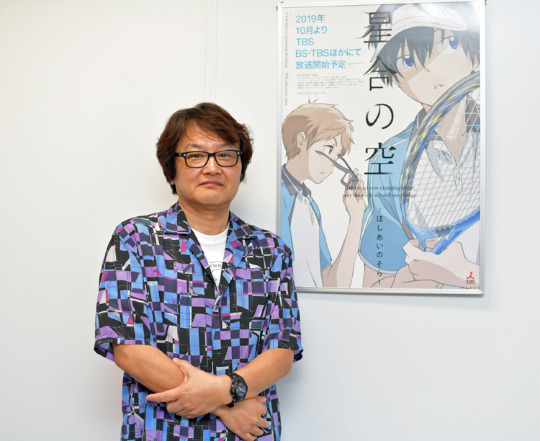
“Original animes are now showing their true value.” - On the feelings that director Akane Kazuki has put into his latest work, “Hoshiai no Sora”.
One challenging TV animation began airing in October 2019. The title of the series is “Hoshiai no Sora”.
In the past, many TV animes were original works, but as of late, animes often have a source material. It can be said that the ratio of “anime adaptations” of source materials is between over 60% and over 80%. “Hoshiai no Sora” is an original anime, which is rare nowadays.
Akane Kazuki-san, the director, original creator and screenwriter, had made three original animes until now. Yet all of them were sci-fi and fantasy, their stories unfolding through “unrealistic” themes. However, unlike Director Akane’s works up to this point, “Hoshiai no Sora” is a “realistic” story that has the youth of middle school boys as its theme.
Why did he decide to make one more original anime, with a theme that he had never written about before? The motive was hidden in the roots of Director Akane’s entry in the anime industry.
Raw || Index
Coming in contact with the possibility of an original anime through “Gundam”
One of the reasons why Director Akane decides to aim for the anime industry was that he “felt the potential of anime”. At the time, many directors, such as Miyazaki Hayao and Tomino Yoshiyuki, were creating original works that did not have a source material and enlivening the anime industry. Director Akane was greatly influenced by them.
“When I was a child, after watching Steven Spielberg’s ‘Encounter with the Unknown’ and George Lucas’s ‘Star Wars’, I began looking up to international live action movies. There were many works amongst the live action movies from overseas that were exciting, fun and insane to watch, and I could feel an essence of entertainment from them. On the other hand, several of the Japanese live action movies were focused on realistic artistry and not very entertaining.”

“Then, I watched the works of Miyazaki-san and Tomino-san and they had me going, ‘This is entertainment! Japan can also make entertainment-type works!’. At the same time, I felt that we could be entering an anime era from that point onward.”
After graduating from university, Director Akane joined Sunrise. Under Director Tomino Yoshiyuki, father of the “Kidou Senshi Gundam” series and one of the people who motivated Director Akane to aim for the anime industry, he was in charge of the production progress of original robot anime works.
Starting with the Gundam series, Director Tomino created countless original animes. Director Akane was charmed by the way that Director Tomino made his series.
“In Tomino-san’s settings, I already required to insert my own ideas. With Tomino-san’s plots as base, the writers would make the scenarios, and the responsibility for their content fell upon the storyboard writers, but if we made storyboards that were exactly like the screenplay, Tomino-san would get angry. ‘Put more ideas into it,’ he would say. ‘I’m already giving so many ideas, so why won’t you guys give some too?!’ (laughs). For original animes, in order to make the series interesting, we had the duty of sprinkling and hammering our ideas into it while having constant questions about it. Witnessing this at twenty years of age, I came in contact with the enjoyment of making original animes.”
From this experience, Director Akane started to think that making original animes was something natural for animation directors.
The decline of original animes | The sense of two impeding crises that he had been observing
Having left Sunrise and turned into a freelancer, Director Akane birthed original animes one after another. He worked as the director, original creator and series composer of “Geneshaft” (2001), “Heat Guy J” (2002) and “Noein: Mou Hitori no Kiki e” (2005). However, along with the passage of time, the difficulties of creating an original anime increased. This was because the fact that the public became able to purchase anime films (VHS and DVD) gave rise to a climate of concern for the film sales in the industry as a whole.
“Original animes take a great deal of workload and costs for the production and advertisement. Still, you have to release them in order to know if they will be a success. On one hand, animes that have a popular source material such as mangas, light novels and games have their stories and characters ready, and you know they will sell to a certain extent even if there is not much propaganda for them.”
And so, the number of projects for original animes saw a steady decrease. Currently, most of the animes being broadcasted are series that have source materials. In these circumstances, Director Akane claims that he can sense two impeding crisis.
“The first is: I feel that the viewers have begun to grow tired of anime. When they have a source material, people can get excited over the developments even without watching it in earnest. I wonder if they are becoming unable to watch anime seriously. If I had to say it, anime is turning into a sashimi accompaniment nowadays. Social medias are the sashimi and anime is the grated radish. People watch anime in order to talk about it in social medias. Anime is becoming a tool for communication. For us, the creators, this is destructive.
The second is the decline of the anime industry. That is because the people who have the know-how for making original animes are disappearing. Many of today’s young animators enter this industry after watching animes that have source materials. The number of people who aimed for this industry out of wanting to create original animes has truly decreased. It is exactly because things are this way now that we need original animes.”
Breaking the patterns of traditional animation and opening up a new path
youtube
“Hoshiai no Sora” is the original anime that Director Akane took roughly fourteen years to make after “Noein: Mou Hitori no Kimi e”. With the sense of impeding crisis as his trigger, the thought that “we must advance with new ramifications and possibilities of animation” sprouted within Director Akane himself.
“When I thought about what young people use their money for these days, I concluded that they use it for ‘experiences’. That they might be paying to experience things they would not be able taste anywhere else, such as live concerts and events. When I pondered what could be the equivalent to a live concert in terms of anime, I figured that original animes feel like lives. Original animes, I thought, can create experiences that you can only have a taste of through them, since nobody has seen them before, so there is excitement when they are watched for the first time upon being broadcasted, and all sorts of emotions stir up because you cannot predict the future developments.”
In order to have the viewers feel that “experience”, what he was particularly conscious of was the “story”. Until now, he had been the creator, director and series composer of his original animes, but this time, he was the creator, director and screenwriter. Moreover, the setting this time was not a fanciful world of sci-fi or fantasy, but instead is a “realistic” story that depicts the youth of students. As “unrealistic” stories about the isekai theme have been increasing in number in the past years, Director Akane has put into it his intentions of being able to further amplify the feeling of a live concert through a realistic story.
“In ‘Hoshiai no Sora’, the story is portrayed through breaking the barriers of conventional anime. Several of the animes being aired nowadays have the role of ‘a place to escape to’. Many series depict impossible things in hilarious and crazy ways, forgetting about common life. That is by no means bad, but I believe anime should also have other functions. I aimed for a story that would not be simply funny, comfortable to watch or emotional, but that would throw themes at the viewers and make them ponder on ‘What do you think of this phenomenon?’ with me. I want to reflect the conflicts and troubles shouldered by the people who are living in the present, as well as the current era, through anime. Additionally, I want to show a new path not just for the audience but also for the people currently involved with anime production, that ‘this way of making anime also exists’.”

“Hoshiai no Sora” portrays children of the current times
And so, on October 2019, “Hoshiai no Sora” aired at last. Starting with its project, this work took a period of about three years to be made. In regards to its production, Director Akane states that he interviewed young people who are from the same generation and environment as the featured characters.
“This time, when I received the story, I reminisced to my childhood first-thing. The child characters who appear in anime look like they are having fun and are portrayed as though they symbolize nostalgia, but is it really like that in real life? When I looked back into my childhood, there was a lot of constraint, irritation towards myself and others, those kinds of things. So above all, I wanted to depict this properly. But this time, even though I could write as much as I felt like about my own childhood frustrations, I wanted to write about the frustrations of present-time children. The environment that children are put in nowadays is becoming much more complicated than in the era I was raised. I wanted to write about the children who live in it through anime.”
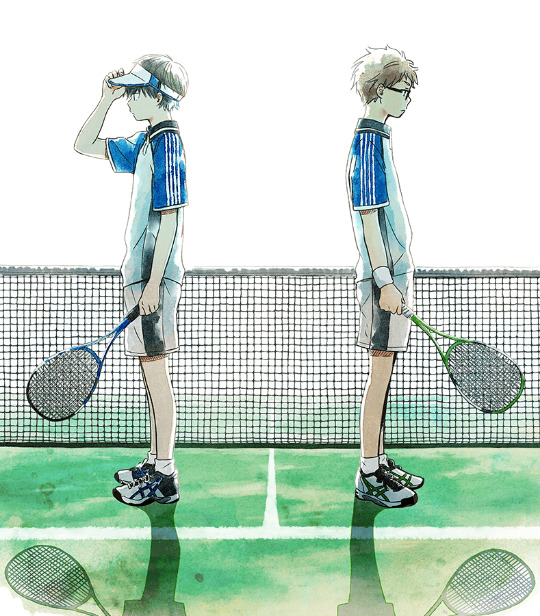
“That is why I did interviews first of all. In those interviews, I found that, along with the evolution of the times, children felt things that adults are incapable of feeling. Nevertheless, when adults do not understand this, I noticed that they often disavow young kids without listening to them. I thought that, if I also portrayed this part of it, the younglings might watch the anime seriously as if it were them.”
What livens up this crafted story is the “art style”, which gives off a soft impression. It is said that the adoption of anime-like cutesy illustrations in contrast with the realistic story was the producer’s suggestion. Since people cannot tell what kind of story an original anime with no source material will be until they watch it, he made use of the idea that they would be drawn into the anime by its art and gradually get pulled into the story. Introducing people to a realistic story through an unrealistic element - one could take this as a form of expression that can be achieved exactly because it is an anime.
In 2005’s “Noein: Mou Hitori no Kimi e”, “new” techniques were adopted, such as the CGI outlines and the fact that the animation style changed on every episode, which was rare for the animes of the time. Just like that, Director Akane always shows us viewers a new “something”. This deepened the expectations that “Hoshiai no Sora” would also surely show us something novel.

“When watching the series, one might at first have the impression that it is about the activities of a middle school boys’ soft tennis club, a sports thing. However, it is a drama that depicts not just this, but also the frustrations and troubles that middle schoolers shoulder these days, including the adults who cause them. It reflects the nature of the current times and presents questions, as we have tried all kinds of devices to make people think, regardless of whether they are young children or adults. It is different from the patterns of anime that people have being seeing until now, so there might be viewers who were at loss. I think they could not have imagined how the story would turn out (laughs). With this included, I want everyone to have fun watching it.”
#hoshiai no sora#hns#stars align#fyeahsportsanime#sportsanimedaily#hoshisora#katsuragi maki#shinjou touma#akane kazuki#anime#interview#my translation
31 notes
·
View notes
Text
This horror movie is directed by and stars all women. It looks scary good.
<br>
Jovanka Vuckovic hates when it happens. But when you're a film director and a woman, it's inevitable: People are going to think you're on set in a different capacity.
"I've been on film sets where the stunt man comes up and says, 'Oh, are you hair and makeup?' Uh, no. 'Are you wardrobe?' No," Vuckovic says. "'Oh, then what are you doing here?' I'm the director. 'You don't look like a director.'"
"Well, what's a director supposed to look like?"
Photo courtesy of Magnet Releasing.
A former horror magazine editor from Toronto, Vuckovic has been a fan of the genre for many years. Working in publishing and later in the male-dominated filmmaking world, it became clear to her how underrepresented women were behind the camera and, thus, how wildly misrepresented they were in front of the camera — particularly when it comes to horror.
"I kept asking people, 'Please, can you just write women characters as actual human beings?'" she explains. "I got tired of asking, so I just decided I'm going to do it myself."
Vuckovic's short film "The Box" is part of a horror anthology, "XX," that's garnering a lot of buzz at the 2017 Sundance Film Festival.
For many moviegoers, it's both a scary film and an important endeavor.
The trailer for "XX" is pretty damn terrifying. But even cooler, the anthology — which features four short films, including Vuckovic's — is completely women-led, with each film directed by and starring women.
Peyton Kennedy in “The Box," Vuckovic's short film in "XX." Photo courtesy of Magnet Releasing.
Vuckovic says women made up roughly 80% of the crew for her short. On most sets, that ratio is basically flipped.
Along with "The Box," "XX" features Roxanne Benjamin's "Don't Fall," Karyn Kusama's "Only Living Son," and Annie Clark's "Birthday Party."
If the trailer (embedded below) is any indication, each short appears as scary as the next. There's no shortage of creepy children, torn-off fingernails, and camping trips gone awry between the four dark tales.
"Birthday Party" marks the directorial debut for Clark, who's better known to most as musical artist St. Vincent. Her involvement helped "XX" premiere at Sundance on Jan. 22, 2017, to a sold-out crowd.
Directors (from left) Roxanne Benjamin, Annie Clark, Jovanka Vuckovic, and animator Sofìa Carrillo at Sundance. Photo by Matt Winkelmeyer/Getty Images.
The thrill-seeking audience at Sundance loved the barrier-pushing concept of the film anthology just as much as it loved the blood, guts, and screams — probably in part because of how different "XX" truly is.
Historically, filmmakers in horror have been overwhelmingly male. And that means women on-screen are often portrayed in trope-y, unrealistic roles.
While the male gaze and gender stereotyping run rampant throughout most genres of film, horror may arguably be the worst offender. From the damsel in distress and evil seductress to the sexually liberated woman who must be killed and the vengeful lover, a handful of tropes have largely carved out the types of dehumanizing roles available to women in horror.
Actor Peter Cushing and producer Anthony Nelson Keys on the set of a Hammer Film Productions horror film in 1965. Photo by Terry Fincher/Express/Getty Images.
"The only thing you have to do to make a movie feminist is depict women as actual human beings," Vuckovic says of changing the status quo. But by that standard, many scary flicks fall embarrassingly short.
It should be noted that the genre isn't exactly known for its racial inclusiveness, either, as many films continue to fail at diverse casting: “We primarily see white-washed versions of the world in a lot of movies," Vuckovic says. "Young people need to grow up seeing versions of themselves on screen."
Sadly, there hasn't been as much progress for women in horror (or in Hollywood, more generally) as you might expect.
In fact, as Vuckovic points out, there were actually more women working as writers, producers, and directors during the silent era of film a century ago than in Hollywood today.
Director Dorothy Arzner and screenwriter Sonya Levien in 1930. Photo by Hulton Archive/Getty Images.
Women make up about half of film school graduates at top schools like the University of Southern California and New York University's Tisch School of the Arts, yet they make up just a tiny fraction of actual working directors, MTV News reported. Lack of opportunity outside the academic world plays a big role in that lopsided reality, according to Vuckovic.
Women are "not allowed to fail the same way men are allowed to fail," she says, echoing the same injustice Reese Witherspoon spoke out about in March 2016: Men's movies can flop at the box office and they'll still get a second (or third or fourth) chance at financial redemption. For women, it doesn't work like that.
The good news: Signs are pointing to progress for women in the horror genre. But we all have a part in making that happen.
According to Vuckovic, recent films like "A Girl Walks Home Alone at Night" and the critically acclaimed "The Babadook" — a film that explores the difficulties of single motherhood through a horror lens — have helped move the genre forward for women behind (and in front of) the camera.
"The Babadook" director Jennifer Kent (left) and star of the film Essie Davis. Photo by Larry Busacca/Getty Images.
"I don’t think a lot of the filmmakers making horror now know its worth, or realize the potential of the genre," "The Babadook" director Jennifer Kent told New York Magazine in 2014. "Just because it's a horror film doesn't mean it can't be deep."
It's important we take note of the films that are created by women and make sure to support them at the box office, Vuckovic notes — showing that women-led films can succeed financially is the best way to provide more opportunities for more women down the road.
Through "XX," Vuckovic hopes young girls learn there is a space for them in the horror genre, despite what anyone else says.
"Go, pick up a camera, make some movies, and don't take no for an answer," she advises girls interested in the magic of filmmaking. "You didn't go to film school? Who cares. Get your friends to help you, and just start — start somewhere."
"XX" opens in select theaters and on video on-demand Feb. 17. Watch the trailer below:
<br>
0 notes